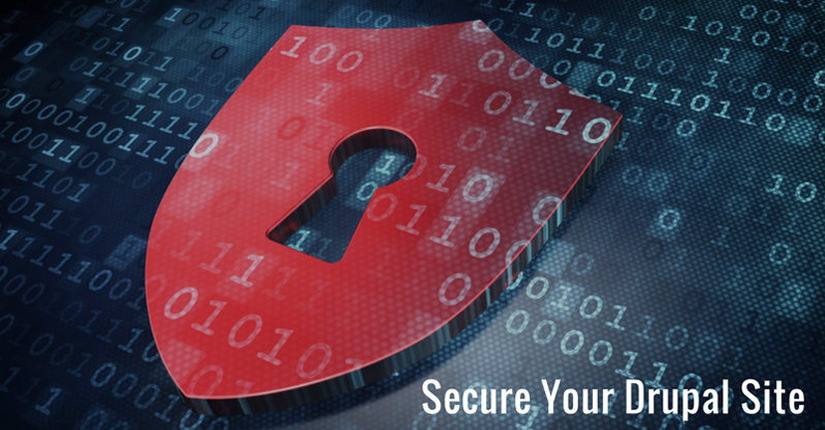Unlock Expert Advice with Zero Commitment.
We’ve Eliminated the Barriers.

We would like to inform in any circumstances your Drupal site gets compromised, please report with details to the security team at security@drupal.org. Though the security team is unable to help individual sites for now, but does like to keep track of compromised sites to look after the pattern.
Developers of open-source CMS Drupal are advising website admins to patch a flaw that attackers can exploit by visiting a vulnerable site. This bug affects all websites running on Drupal 8, Drupal 7, and Drupal 6. If the project usage page reports are true, then about a million sites are running the affected versions.
Drupal urged to update to Drupal 7.58 or Drupal 8.5.1 without delay. It also issued an alert for the patch warning to allocate time for patching as exploits might arrive “within hours or days” of its security release. It also said that there haven’t been any further attacks using the flaws.
The bug is called Drupalgeddon2. It has been allocated the official identifier CVE-2018-7600.
NIST Common Misuse Scoring System has given this platform a “highly critical” rating with a risk score of 21 out of 25.
It has released patches for quick remediation. However, there are no security releases for the unsupported Drupal 8.4X and 8.3x.
Providing top-notch web development company in New York, we are committed to helping server administrators check their website for hacks and eliminate malware infections. We created the guide so users can identify and fix critical hacks. However, this guide is not meant for the all-encompassing guide, but it points out the most common infections we see.
Common Indicators of a Hacked Site
• Spam keywords in nodes and search engine content
• Unknown files under sites/default/files
• File modifications or core integrity issues
• New nodes from an illegal user
• Abnormal, Unexpected, or slow site behavior
• Safety measures warnings by Google, McAfee, Bing etc.
• Malicious new users in the dashboard
• Host suspended your site for malicious activity
Make a Forensic Copy of the Site
When you are certain that you’ve been hacked you should quit everything and make a forensic copy of it. A few people like to truly yank the system link and power cable from the server imagined that clearly isn’t generally suitable and doesn’t work for all situations. If you can, this forensic copy could be an operating system level snapshot of the server/servers integrated. Something else, go for a duplicate of the database and files. Store one copy to media that can’t be modified like a CD or DVD.
You should begin choosing who you have to inform about the issue. In the site that your site had users and you trust your site was totally assumed control then private content like their email address, IP address and private on the site is compromised. In a few areas, you are will undoubtedly illuminate individuals of this presentation (e.g. on account of sites requiring HIPAA or PCI Compliance), if not likewise ethically bound.
In the event that you are not the proprietor of the site, you ought to consider which partners to educate. Visitors to the site may have been exposed to malware. The proprietor ought to be associated with basic leadership.
Depending upon the nature of the site and who you suspect attacked it; you may wish to tell at least one law authorization groups. Numerous local law authorization groups are ineffectively outfitted for managing these sorts of issues. However, maybe they will have the capacity to assist or refer your case to another law implementation group.
Access controls in this platform can be set up for an example, with a full level of control. This implies you can set up account types for any one situation, regardless of whether it’s for user accounts in an online store, magazine content publishers and editors, social group websites, and so on. All access control circumstance is conceivable.
The way to keeping any CMS as secure as workable for whatever length of time that conceivable is to ensure your site is legitimately configured and that the stage and any extra modules are up-to-date. This framework gives a warning and answering to these things, including update details of interest and proposals, to guarantee that any security vulnerabilities that may show up on your site are fixed quickly.
Depending upon the idea of the site you may wish to take it offline. If you presume that it is currently being utilized to distribute malware, send spam, or as a rotate point for additionally, assaults at that point taking it disconnected and introducing a placeholder will, at any rate, counteract additionally damage.
Note that taking the site disconnected likely tips the attackers that you know about their quality. If you don’t take the website disconnected at the web server level. Ensure you have your forensic copy and after that erase out all sessions.
If you suspect that passwords have been transformed, you can refresh them to new esteems utilizing an inquiry like this (for Drupal 7)
WordPress, Drupal, and Joomla! are for the most part extremely secure stages when the product is stayed up with the latest. They all have a huge development group and massive user base, therefore security is at the forefront of continuous development for each software package.
The general dependable guideline is that WordPress and Joomla! are fine for little to medium measured destinations, and Drupal is extraordinary for these sites as well, in addition to it is versatile to huge enterprise sites. What your site needs to do, the stage you lean toward or the organization you work with will eventually decide the product you should utilize. Its’ adaptability is the reason we picked it as our essential CMS, and we adore it; it does totally everything.
We’ve Eliminated the Barriers.
We stand by our work, and you will too.